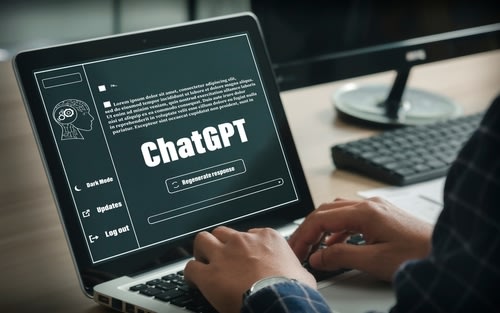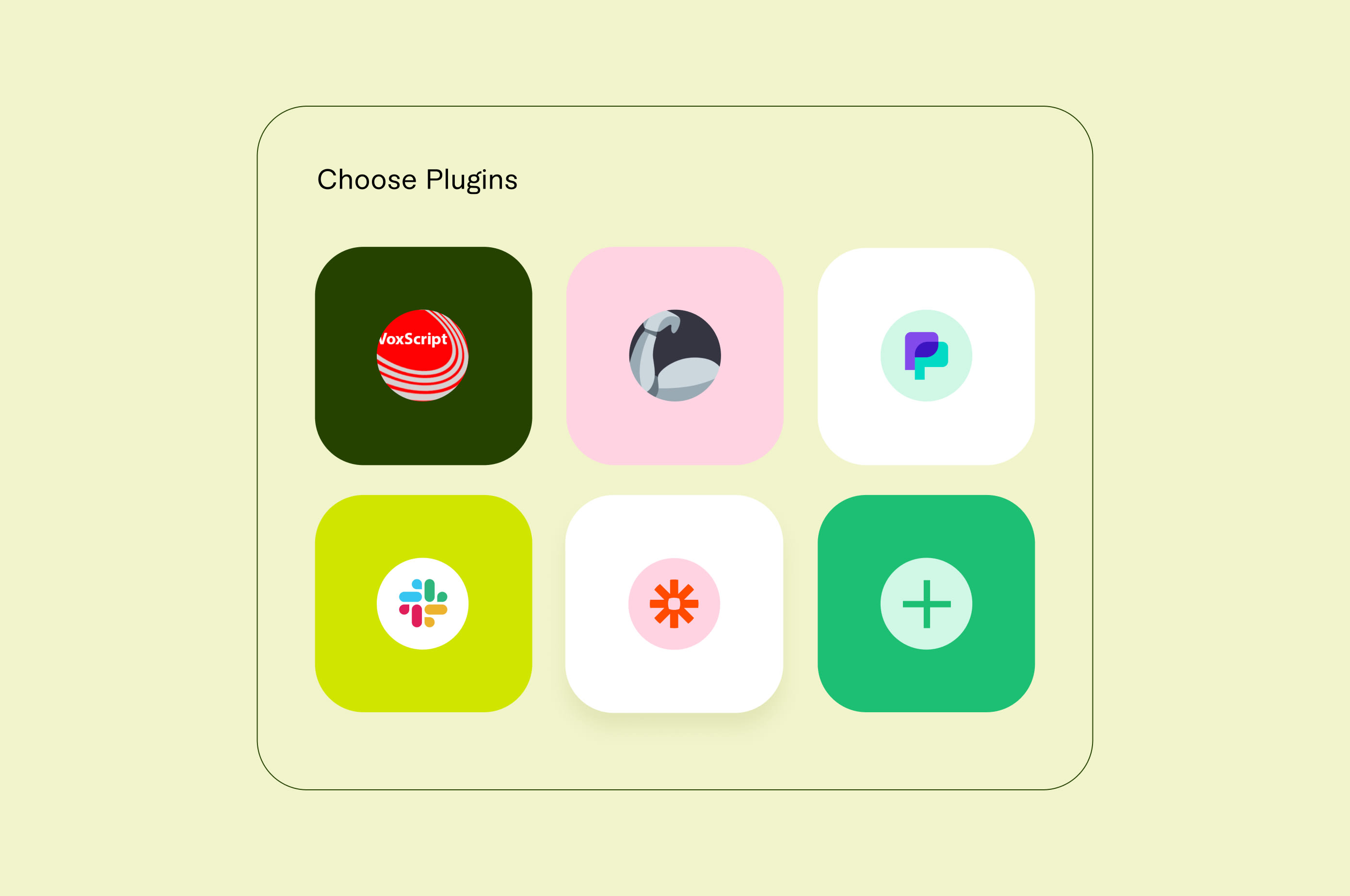9 Innovative Chatbot Examples to Grow Leads and Revenue in 2024
Chatbots are no longer a novelty, but a necessity. Check out some of the best chatbot examples from real businesses to inspire your own.
 December 13, 2023
December 13, 2023 12 minute reading
12 minute reading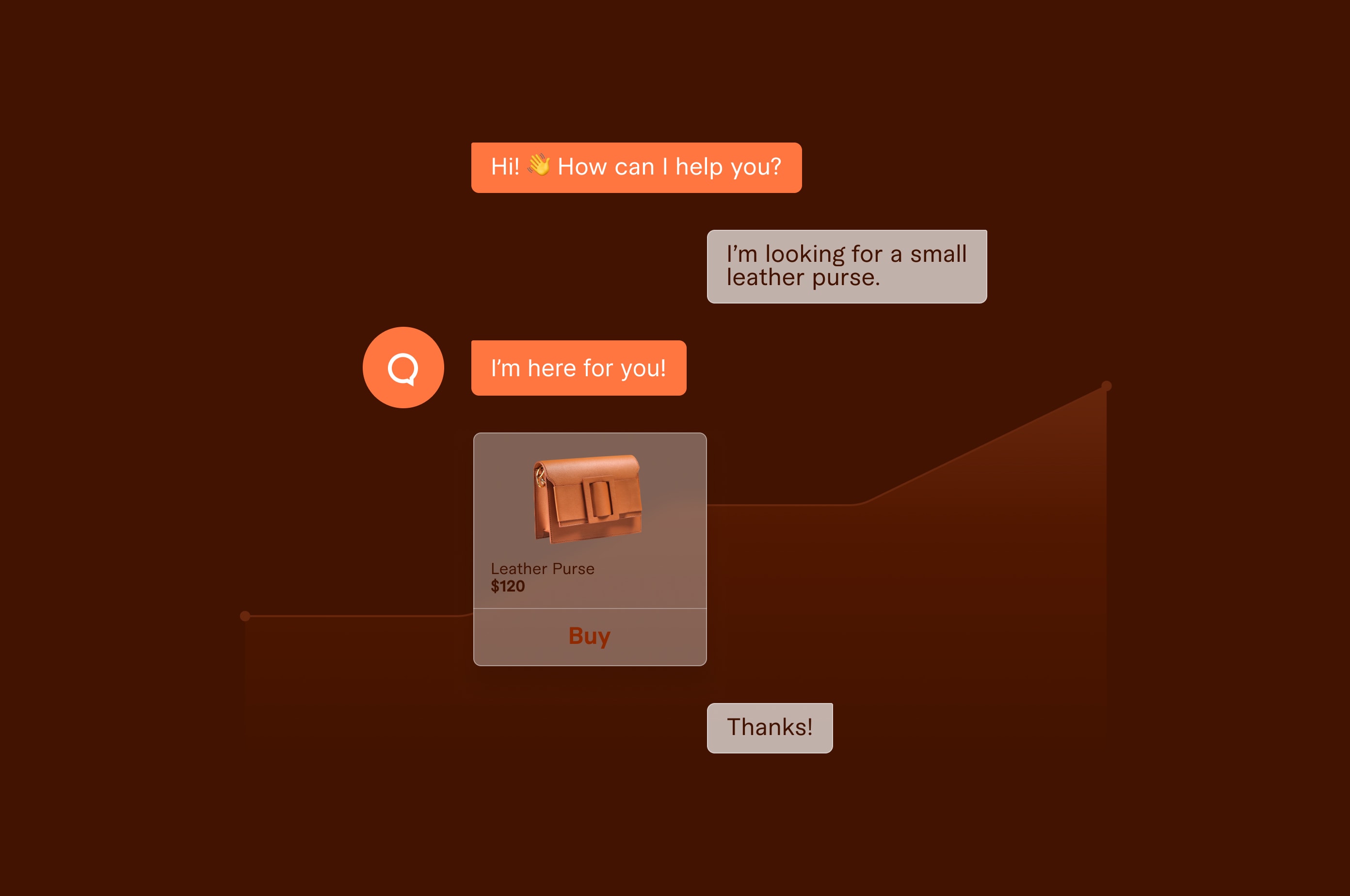
Einstein. Ginger. Jessie. Molly.
You’ve probably met them before… not IRL, but online.
They’re chatbots—and they’re all over the place. They’re the little virtual assistants you meet on websites or social media platforms. Some even talk to you from your smartphone and other smart devices.
Unlike Clippy—the annoying animated paperclip that lived in MS Word, today’s chatbots are intelligent and have become an integral part of the business. They handle customer inquiries, help sales teams qualify leads, give product recommendations, and confirm orders.
Curious about how chatbots play into your company’s processes? This guide shares innovative chatbot examples from real businesses to inspire your own.
What is a chatbot?
A chatbot is a computer program that uses artificial intelligence (AI) models to simulate and process written or spoken human conversations through a live chat interface.
For example, Google’s Dialogflow is a conversational AI chatbot for small businesses to create and deploy their own bots, voice assistants, and other conversational interfaces across devices and platforms.
“It understands user input and provides relevant responses using natural language processing and machine learning methods,” says Jonathan Merry, co-founder of Intent—a digital media company. “The Dialogflow chatbot allows your consumers to communicate in their native language. Your response and analysis come from your own language. It has assisted many of our website and omnichannel visitors in communicating effectively.”
Chatbots are programmed with pre-written responses displayed based on the user’s query or message. The chatbot analyzes a user’s text to pick out keywords and/or phrases relating to frequently asked questions (FAQs) or common roadblocks.
Based on the information it receives—and the chatbot technology used—the bot will interpret what the user is saying and provide pre-set answers or self-service solutions.
Bots can also handle second or third-tier requests and/or escalate the issue to the best live agent available.
How do chatbots work?
Chatbots use AI, machine learning (ML), and natural language processing (NLP) to interact with users in a life-like manner—just as your company’s front-of-house staff would interact with customers.
These smart technologies ensure a chatbot can read text, hear, and interpret users’ requests or speech. Then, the bots will measure sentiment and determine the important parts of customer queries or requests before responding to them.
Chatbots continuously learn how to respond to users by analyzing the data sets you feed them and the dialog they have with users,
These AI bots can also handle unstructured input. For instance, if a customer asks how to reset their password, the bot can respond to the customer in several different ways.
Today, many industries use chatbots for diverse purposes, from customer service to data collection to lead generation and qualification.
Before we move to the real-world chatbot examples, let’s review the benefits chatbots bring to your business.
What are the benefits of chatbots?
There’s a lot to gain from deploying chatbots to various processes in your business.
Here are some of the key benefits:
Better customer service: Customers expect easy and quick resolution of their issues. In fact, 64% of customers say speed is just as important as price. Once they hit send, you’re on the clock. If you don’t respond as fast, about 6 in 10 customers would be disappointed with your business. Chatbots offer a channel that handles customer support, onboarding, and other low-value tasks 24/7, giving customers the immediate responses they desire.
Real-time lead qualification: Sales teams can benefit from chatbots, as they can help qualify leads from anonymous website visitors or prospective customers. Then, bots guide customers to the right information or products they’re looking for—including promotion notifications and discount codes. This real-time guidance personalizes the shopping experience, reduces cart abandonment, and can lead to more conversions, sales, and revenue.
Time and cost savings: Compared to human agents, chatbots can work 24/7 without breaking down, making them more cost-effective and efficient. They also handle low-value tasks, which frees your team to focus on more complex chats and service escalations. Chatbots take less time to do a task, which lowers business operation costs, like staff equipment, training, and wages.
Higher conversion rates: Chatbots assist your visitors and customers with their online shopping, queries, and more by giving them relevant information and helping at checkout. This reduces doubts along the customer journey, speeds up the process from awareness to purchase, and boosts conversion rates.
Integration with other business applications: Chatbots play well with multiple business apps, ecommerce tools, and social media platforms like WhatsApp, Instagram, and Facebook Messenger. For example, you can integrate a chatbot with your customer relationship management system (CRM) to personalize customer interactions. The bot can review customers’ past experiences with your business and reference the relevant details, making communication with your customers easier.
Increased customer satisfaction: Deploying chatbots to various tasks improve your sales or support teams’ speed and efficiency. Bots answer questions to common support requests, resolving 58% of return and cancellation issues, before they make it to your team’s ticket queue. This enhances the customer experience, boosts customer retention, streamlines work, and increases overall customer satisfaction.
Now, let’s check out some excellent AI chatbot examples from real businesses.
What are some innovative examples of chatbots?
A few decades ago, the concept of chatbots sounded like something from a sci-fi novel.
Today, leading brands like Apple, Sephora, and more supplement their care approach with chatbots to scale operations and offer fast and high-quality support.
Ready to see what those chatbots look like in action? Here are our favorite chatbot examples that show practical, real-world chatbot uses in a diverse range of businesses.
Ecommerce chatbot examples
Ecommerce companies use chatbot platforms in a number of ways, including:
Collecting customer information, feedback, and reviews
Offering customer support or shopping assistance
Upselling and cross-selling to customers
Preventing and recovering abandoned carts
Offering order tracking information and updates
Increasing customer engagement through product recommendations, promos, discounts
You can use ecommerce chatbots in your online store, just like these brands.
1. Gymshark
Gymshark—a workout clothing brand—has a chatbot that lives on its website. Anytime a shopper visits the site and clicks the chat bubble, the bot will present questions to determine the purpose of their visit.
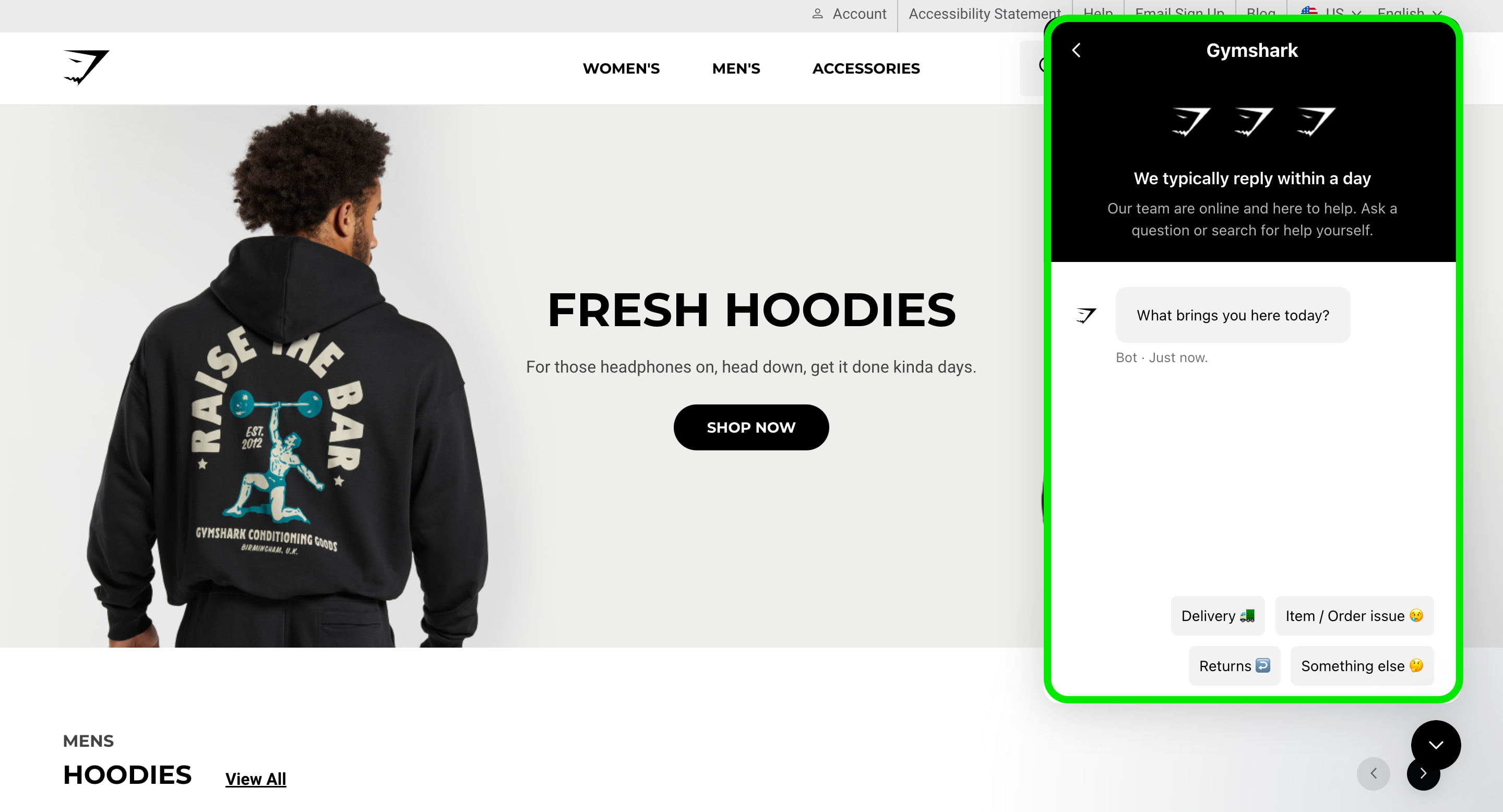
Based on the user’s responses, the Gymshark chatbot will reply with the next steps. For instance, if you select “Something else”, the bot will ask you for your name and other details, so human agents can help straight away if they need to.
Through its chatbots, Gymshark provides a unique shipping experience that drives purchasing from social ads. Shoppers can find suitable outfits for their workout needs and make instant purchases.
2. Domino’s
Domino’s—a multinational pizza restaurant chain—has a helpful chatbot named Dom. The messenger chatbot lets you order and customize your pizza within the chat box, making it a cinch to buy your favorite pizza flavor or pie.
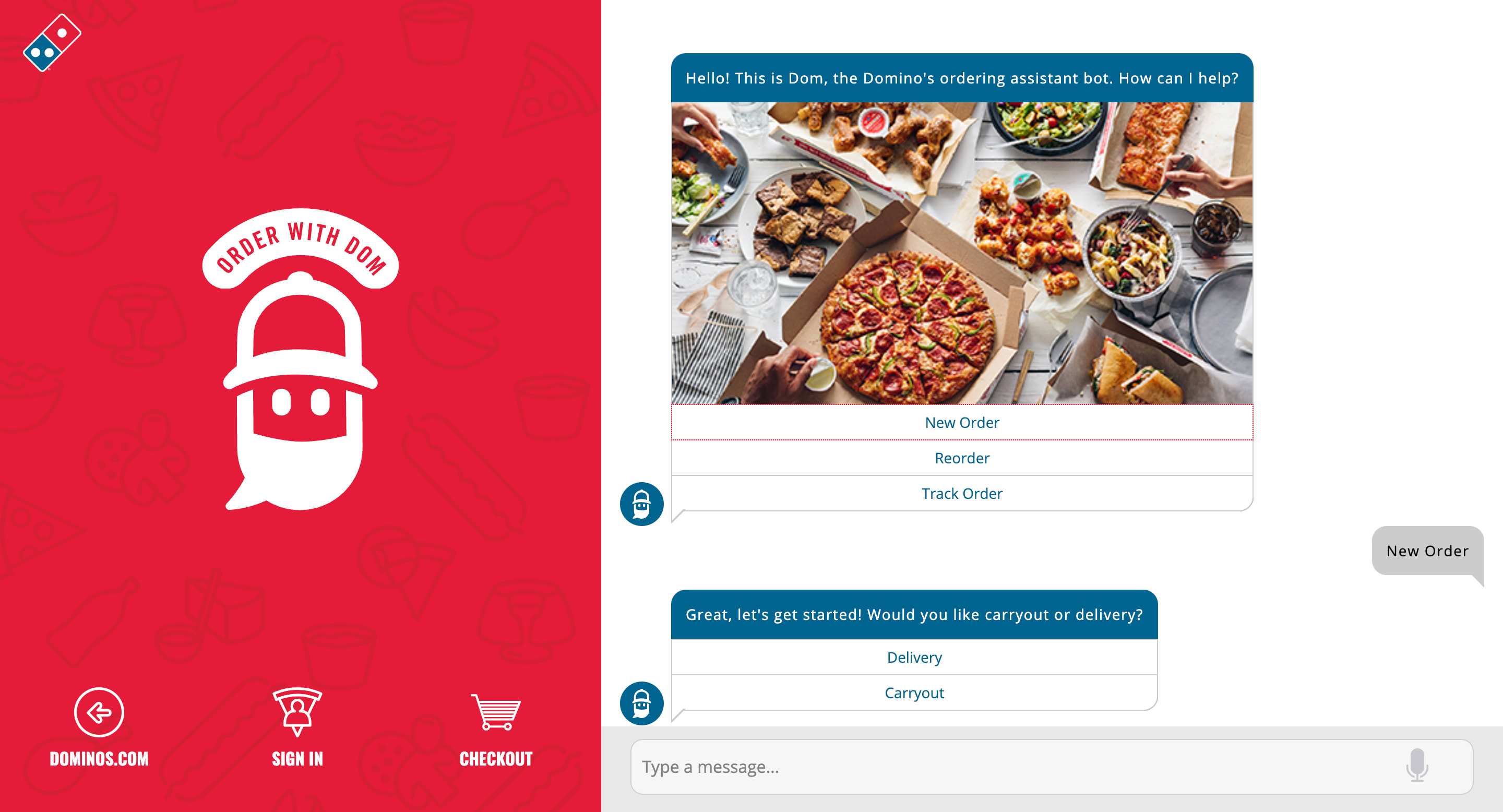
Dom can save and repeat orders, then find the nearest Domino’s pizza store in your location.
Domino’s customers don’t need to sign up or download a mobile app to use the Dom chatbot. They can order easily, even from a social media platform, and get their favorite snack delivered to their doorstep.
The pizza brand expanded its digital ordering service to its customers, allowing them to order through its Facebook page. Any customer who created a pizza profile through one of the company’s digital channels can order any item through their account or by texting “PIZZA” to the bot on Facebook Messenger.
Thanks to Dom and other online strategies, the pizza chain has generated millions of impressions across social media platforms and is quickly moving towards its mission to become the #1 in every neighborhood worldwide.
3. Kiehl’s
Kiehl’s—a luxury beauty brand—leverages its chatbot to provide customer support, beauty consultation, and skincare matching.
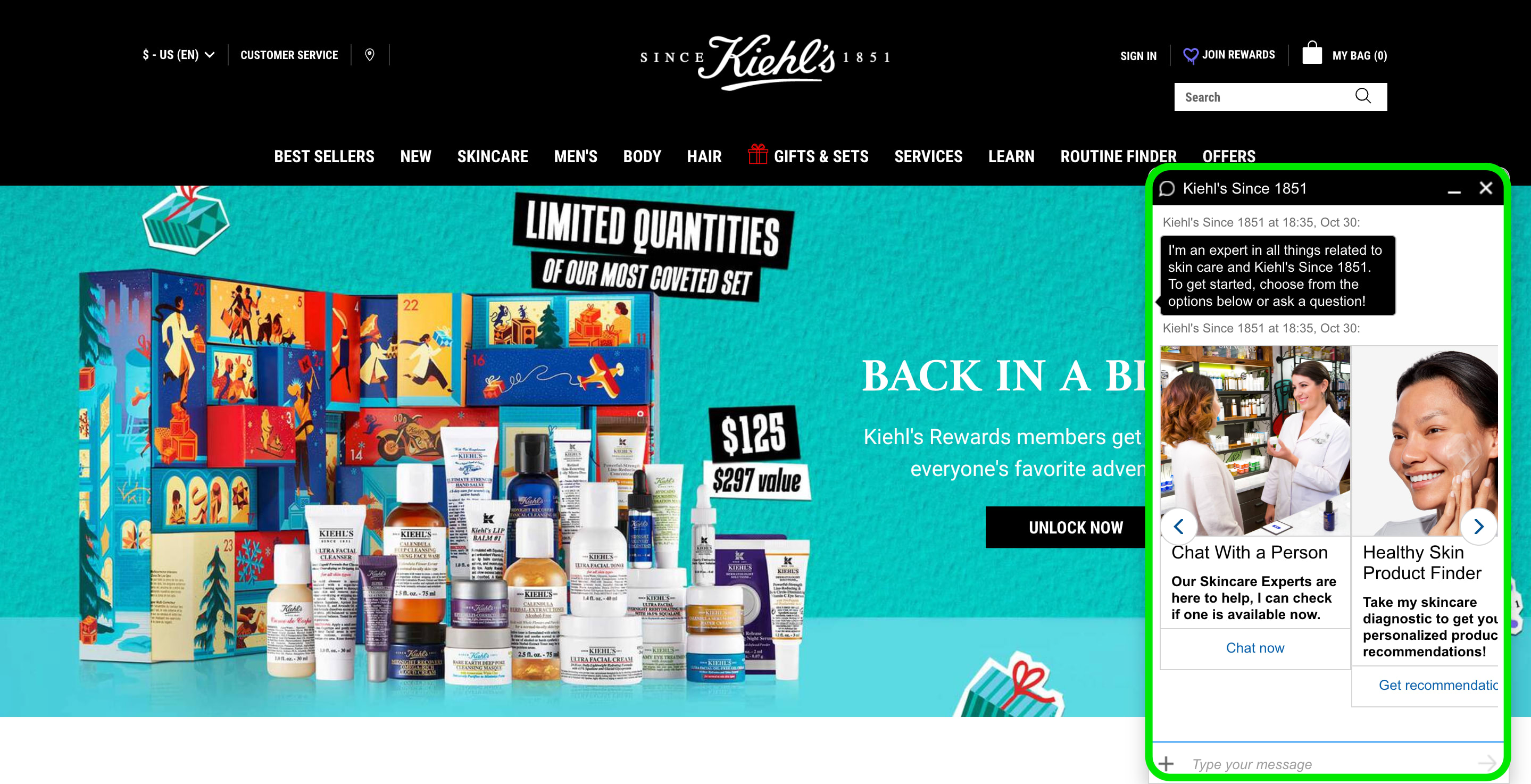
Like a human consultant, Kiehl’s chatbot can handle several things, including:
Giving tips for different skin concerns
Offering the right skincare products
Explaining product ingredients to shoppers
Taking customers’ orders
Sending product package tracking information
The brand also uses automation on its social media pages, providing conversational experiences between the bots and shoppers. This way, Kiehl’s connects easily with people on different platforms and ensures instant, personalized messages based on their queries.
Kiehl’s Malaysia, in particular, has successfully used bots on Instagram that deliver conversational commerce experiences for customers. This resulted in 30% more qualified leads and 20% conversion rate from consultation to sales.
Customer service chatbot examples
As customers increasingly expect instantaneous, effortless user experiences, deploying chatbots can reduce churn and enhance customer satisfaction.
A Gartner report shows that 80% of customer service and support businesses will apply generative AI technology to improve customer experience (CX) and agent productivity.
Most will use the technology for AI-powered chatbots, automating human work, and content creation, but 38% of business leaders say customer service is the primary focus of generative AI investments.
Here are a few innovative examples of businesses using customer service chatbots.
4. Warby Parker
Eyewear brand, Warby Parker, relies on its helpful chatbot—both on the company’s website and mobile app—which 70% of the company’s customers interact with before placing an order.
The brand’s chatbot does the following:
Promotes its products
Walks customers through initial prescription check stages
Determines whether the shopper is eligible to use the platform
Gets relevant personal and contact information from shoppers
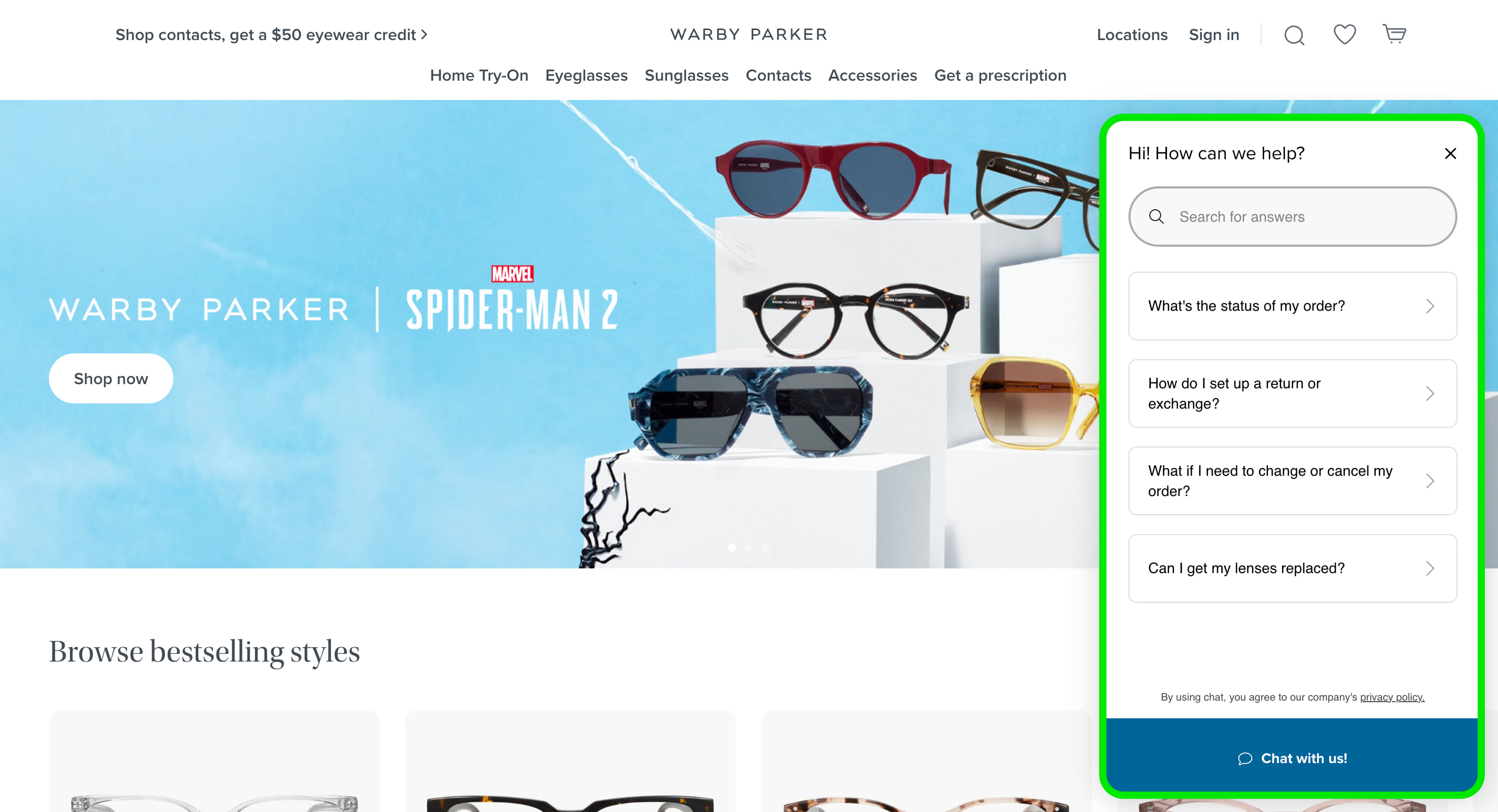
When a shopper visits the Warby Parker website, they can enable the chatbot to get answers on different concerns, including online orders.
Offering a chatbot ensures the company provides seamless support on the platform the business is based on, satisfying customers’ needs easily and quickly in a way that’s familiar to them.
5. Dollar Shave Club
Dollar Shave Club sells high-quality, affordable grooming and shaving products online.
Initially, Michael Dubin—the company’s founder—responded to customer service requests himself. As the business grew and became popular, so did the need to provide quality customer experiences. Doing this ensures customers walk away happy from each interaction, whether it’s a first glance at their quirky ads or a support request.
The Dollar Shave Club installed a chatbot on its website to respond to simple, one-touch questions or customer inquiries 24/7, no matter the location or time zone users were from.

The chatbot was first deployed to handle repetitive support tickets about subscription changes, which represented a large chunk of the company’s overall ticket volume, responding with relevant content from the company’s knowledge base.
Complex issues were routed to Dollar Shave Club’s support agents, to resolve customer concerns with more personalized and contextual responses.
6. LEVI’s
Levi’s—an established denim brand—uses chatbots on its website to help shoppers find the perfect pair of jeans. When a user visits the website and selects an option, they’ll answer a series of questions to guide them along their buying journey.
The chatbots act as on-page concierges, providing personalized shopping to Levi’s customers while helping the company sell more jeans.

The jeans-buying bots ask simple questions to help customers sort through Levi’s catalog to find a suitable pair of jeans based on their preferences. Mary O’Regan, Levi’s former global copy director, says the chatbot generated an 8% conversion rate for the brand.
While Levi’s relied on its copywriting team to create prompts in-house, many small businesses today hire AI prompt engineers to train ChatGPT and other AI models. Then, they find AI prompt writers who can talk to GPT using effective prompts with ample context to get the best results.
If you’re on a tight budget, you can build an AI chatbot with ChatGPT, then use different AI generators to enhance your customer support experience and reduce response or resolution times.
7. WestJet
Canadian airline WestJet also uses chatbots for customer service, but it provides more options than just a bot on its website.

The airline launched Juliet—its AI chatbot—which responds to customers’ queries via chat, Facebook Messenger, WhatsApp, and Google Assistant. At the onset of the coronavirus pandemic, the airline saw a 45x spike in customer service phone calls, deflecting tens of thousands from human agents. And, since its launch, WestJet’s customer satisfaction (CSAT) increased by 24%.
The chatbot couldn’t have come at a better time, helping the airline navigate challenges like trip cancellations and scale its customer support operations.
Other results WestJet achieved through its chatbot include:
Resolved 87% of support tickets without human intervention
+24% customer sentiment
530K tickets resolved
200 resolutions per minute (at peak)
Sales and marketing chatbot examples
8. The Cosmopolitan Hotel of Las Vegas
Unlike other chatbots, Rose—The Cosmopolitan Hotel of Las Vegas’ bot—takes on a human-like personality that’s truly unparalleled. The chatbot oozes the resort’s flirty and secretive personality, promising to hook you up with the best of the resort.

When a user sends an SMS, Rose takes on its digital concierge role, sharing restaurant recommendations and helping guests book tables, event tickets, spa treatments, self-guided tours, and more. The bot also responds to questions about The Cosmopolitan Hotel of Las Vegas’ services, including room service options like sending fresh towels to guests’ rooms.
Rose is trained with unique journeys and over 1,000 threads, and drives revenue for the hotel by enticing guests to engage during their stay.
Thanks to the bot’s playful personality, it automatically responds to 80% of guest’s queries, boosting customer satisfaction with the hotel and generating higher sales, particularly among guests who book directly through the bot. Guests who used the bot also spent an average of 30% more during their stay at the hotel.
9. Gold’s Gym
Gold’s Gym—an international gym franchise—is popular for its global fitness centers that offer various group exercise programs and cardio and strength training equipment.
To attract new local customers to its Costa Rica gyms, the company promoted a free week’s membership via Facebook Messenger. The gym ran JSON Ads with ManyChat chatbot and Walletly integration, delivering free week coupons to potential members’ phones.
The bot didn’t ask people for their information immediately after they entered the chat window. Instead, it offered the Get My Coupon option to claim a free week coupon at Gold’s Gym, redirected them to a Walletly landing page to enter their name, email, and phone number, then they’d get a coupon delivered to their mobile wallet.
Using the bot and Walletly resulted in 117 membership signups, 280 redeemed coupons, and an 11,428% return on investment (ROI) within 21 days.
Level up your chatbot with Fiverr
Implementing a chatbot into your business processes can be tricky.
If you’re willing to go the distance, a well-structured and well-designed chatbot can deliver substantial benefits and results to your business. The key is to differentiate your bot with an on-brand, personalized experience that will level up your chatbot game and derive significant results, like the use cases we’ve discussed.
Not sure where to start? Let Fiverr help.
Fiverr’s digital marketplace offers a host of expert, talented freelancers specializing in chatbots, including chatbot developers and chatbot designers. Use our chat system to talk to sellers before buying their services, then manage freelancers, project files, and payments through your dashboard—all for free.
Ready to get started? Sign up to Fiverr to find and hire chatbot developers for your startup or growing business.
